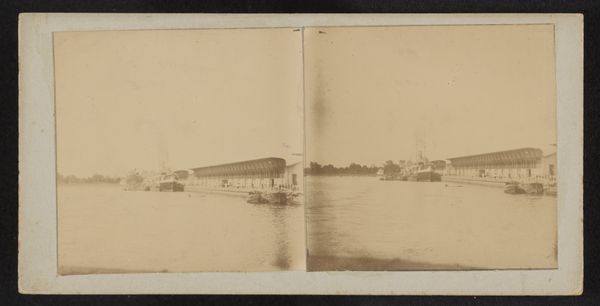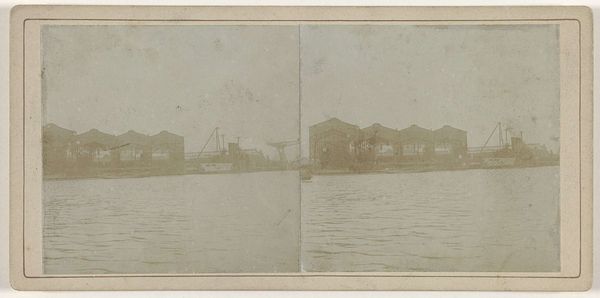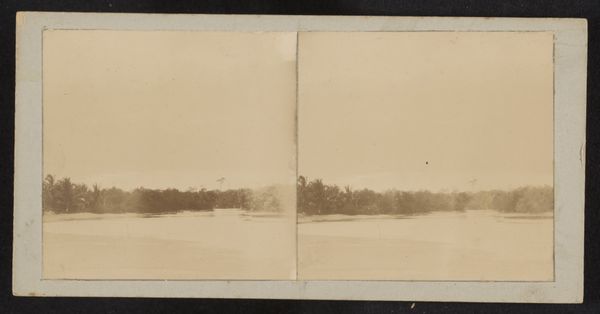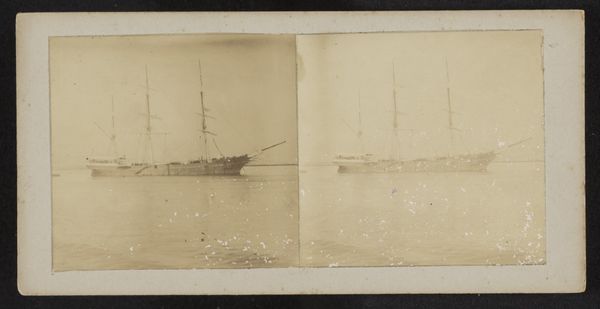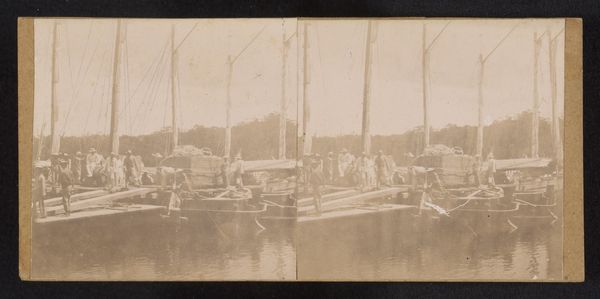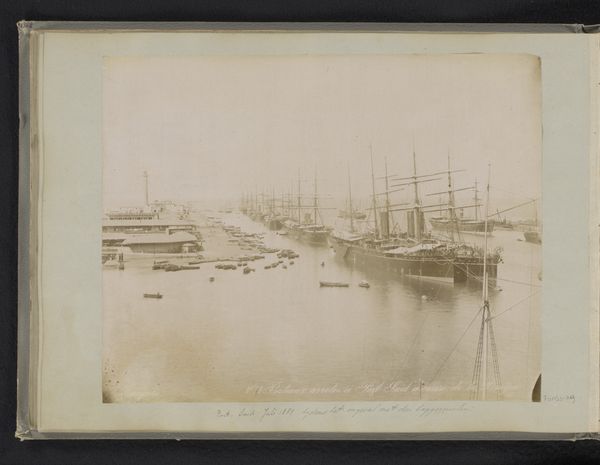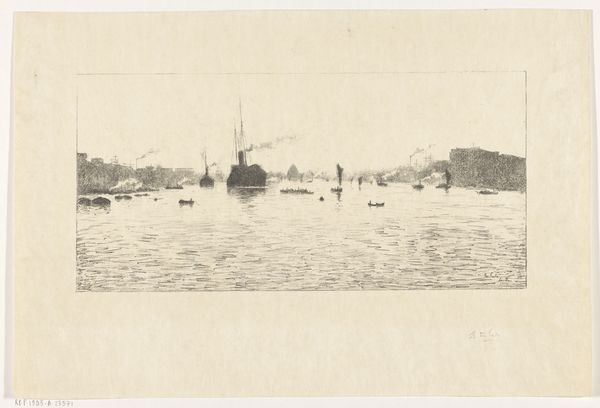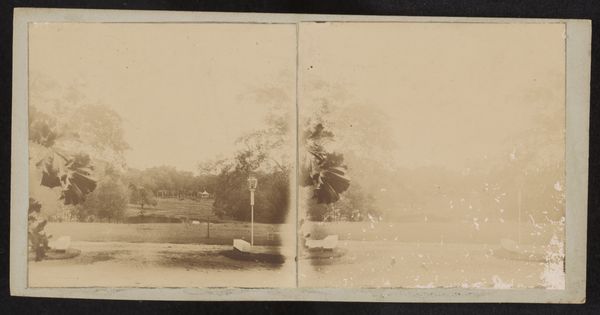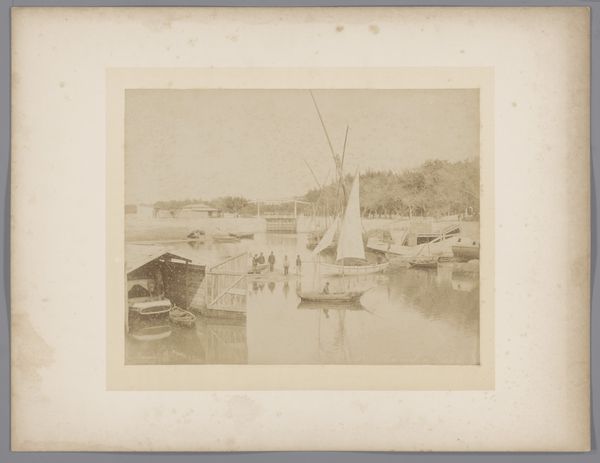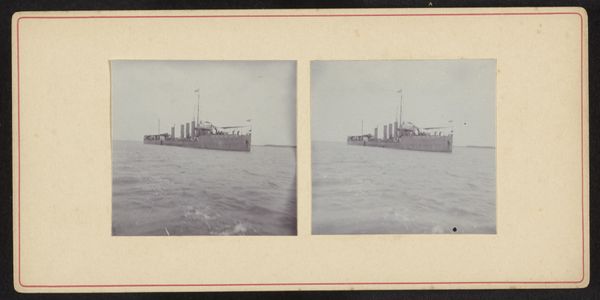
photography, albumen-print
#
landscape
#
photography
#
albumen-print
#
realism
Dimensions: height 77 mm, width 77 mm, height 88 mm, width 178 mm
Copyright: Rijks Museum: Open Domain
Editor: Here we have Robert Julius Boers' albumen print "Tandjong Priok," likely taken between 1900 and 1922. The sepia tones create a nostalgic, almost dreamlike mood. I’m curious, focusing purely on the composition and form, how do you interpret this work? Curator: Focusing on purely formal elements, we observe the stark horizontal division: the placid water mirroring the sky above. The structures, both the ship and the building on the right, disrupt this placidity, acting as strong verticals. It is a careful balancing of geometric forms; did you notice the contrast between the sharp lines of the structures and the blurred texture of the water? Editor: I see it! So the lines guide the viewer's eye, adding to the visual weight. Does the subdued palette also play a part in emphasizing certain structural relations, then? Curator: Precisely. The limited tonal range brings focus to the relationships between shapes. Notice how the smoke rising from the ship's stack mirrors the solid building's shape? The texture of the albumen print itself adds another layer of meaning. Does its materiality impact how you view the composition? Editor: It does. The albumen print makes the photograph into an object with texture, not merely an image. In a sense, the focus shifts to what photography _is_, in addition to what it depicts. This invites scrutiny. Curator: Indeed, the self-referentiality, combined with the tension between geometric forms and materiality, allows us to interpret this work through its internal relations, setting aside any questions of representation, such as harbor activity in colonial Indonesia, to consider the photograph as a pure object of form. It provokes sustained engagement. Editor: It’s fascinating how a formalist reading helps us look at the photograph through this more structural lens. Thanks! Curator: My pleasure. Hopefully, you can use a similar mode of structural investigation as you observe your next piece of art.
Comments
No comments
Be the first to comment and join the conversation on the ultimate creative platform.
